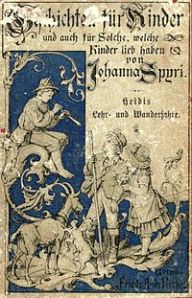Like many little girls I read and loved the book Heidi by Johanna Spyri. Heidi lived in Switzerland in an alpine village with her grandfather and was surrounded by cows with cowbells and lush green valleys. Like Heidi I travelled to visit my granny but it was to rural west of Ireland. It seemed like travelling from the technicolour of my imagination to the black and white of real life. This year I went to find out what the real Switzerland is like and here are some of my reflections.
Switzerland is twice the size of Wales but with only 7.6m people. It’s only been a unified federation since 1848. The federation has 26 cantons of varying sizes. I travelled from the west, Lausanne(population 128,200), to the east, Zurich (368,700+). Cantons are divided (60/40) between German and French speaking with one canton, Ticino, having Italian as its main language. But wherever I went and spoke to people from supermarket workers to the crew on a ferry they were also able to speak and understand English. Unbelievable.
Meeting the locals. In Bern (the capital, but only because it is in the middle of the country; population 123,500) I met up with a group of people who for 40 years have regularly met up at a local cafe, Cafe de Pyrenees. They asked me; was I worried about Nigel Farrage? They were worried about the election of a right wing government in Switzerland, of threats to links to Europe including free travel and cuts to the health service. Sounds familiar.
Architecture. The country was neutral during the Second World War so didn’t suffer any bombing and consequently they still have some of the most beautiful buildings. Everywhere I went there were cranes scattered across the skyline as new buildings were being constructed, most notably in Zurich, which is a really rich city. I stayed in a working class area which was slowly being taken over by yuppies working in global financial firms whilst the local people are being pushed out from the neighbourhoods.
Art. Across the country there are numerous art galleries and museums. In Zurich I counted about 37 art galleries and museums, a feast for me. Paul Klee is one of the most famous Swiss artists and there is a unique art gallery built to his honour in Bern where he is also buried. In Zurich I took a tour through Swiss history at the Schweizerisches Landesmuseum. I loved this museum dedicated to Corbusier.
Homegrown. There is no austerity in Switzerland. In the cities there are no charity shops in the main shopping centres and not many global brands except in Zurich which is awash with money, tourists and global firms of accountants and banks. Many of the shops, supermarkets and bakeries were locally owned with only the odd McDonalds, Subway and H&M.
A Haven. Switzerland has a history of taking in refugees, from the well-known Russian revolutionary Lenin to Turkish, Indian and now African people. In some cities it was easy to see groups of young African men gathering in parks, it was harder to see where they worked. I glimpsed some young African women cleaning in the train station and maybe if I had stayed in a hotel I would have come across them as room assistants. In the latest elections for the federal government the successful right wing party used the issue of refugees to garner votes. Ironic in a society with a booming economy. The right wing won but only on the basis of a 49% turn out.

The poster was part of the campaign by the right-wing Swiss People’s Party (SVP) for the parliamentary elections in 2011.
Train spotting. I travelled to Switzerland by train, my favourite form of transport, and went from train hell (UK) to train paradise. They have a fantastic train service, ironically set up by the British, that is fully integrated across trains, buses, trams and boats. The average day ticket was only £6.
Back to Nature. Like most European countries people have left the countryside for the advantages of city living. The Swiss have kept their countryside by diversifying into providing a haven for tourists and walkers. From Lucerne (population 59,500) I travelled to Mount Rigi and the lush pastures of Heidi country. I travelled up the mountain by train (see below) and then went down on a lovely path scattered with wildflowers (their names helpfully signposted) whilst being watched by the cows with cowbells! Heavenly.

Counterculture? It was hard to see any signs of dissent, in some ways it seemed almost dull because everything was so ordered and orderly. I did notice two demos about Ukraine and the bombing of Gaza. But given the booming economy and a country that spends a large part of its budget on the public services, maybe there is not much to fight against??
If you have enjoyed this article and would like to support this blog by making a donation you can do using this button






